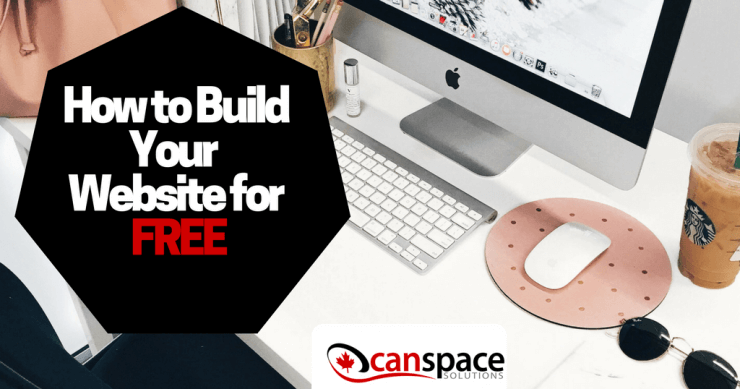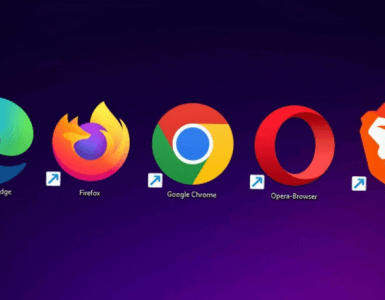Learning how to build your website for free is much easier than you might think! Until recently, such a project required a serious investment.
This guide will show you a step-by-step process to build your first site, while keeping your wallet happy:
- Setting the intention/purpose of your website
- Creating a basic website map
- Choosing the free site builder
- Designing your website
What needs to be done before site-building?
One more thing before we dive into the actual building process.
While you can definitely build your website for free, two main preparation steps will require a small investment.
- If you want to have a professional website that properly reflects your brand, you’ll need a unique domain name. Depending on the domain, prices vary, with the cheapest ones costing around $10/per year.
- Finally, you’ll need a reliable hosting service before you start building your website. The cost is a bit higher than the one for a domain but remember – hosting it’s not only the foundation but also a crucial element of your site’s security.
Once these two steps are completed, you’re going to save literally hundreds (if not thousands) of dollars by learning how to build the site yourself! No need to hire an expensive developer, especially if a basic website is what you need.
1) Setting the intention/purpose of your website
Careful planning will save you from making costly decisions.
Precisely, if you skip this first step and head straight to site building, you may end up paying for a wrong hosting package or picking an unfitting website builder.
So, start by asking yourself these questions:
- What is the main purpose of your site – will it only display your company’s info or sell actual products/services?
- If your free website will serve as an online store, how much space (in GB) would you need?
- Will your site serve primarily as a blog?
According to answers to these basic questions, you’ll be able to choose the suitable hosting and site-building software options. Make sure that your host supports online stores if that’s what you’ll need.
Likewise, if a blog is what you plan to create, then blogging platforms should be your building option. Your blog can be up in minutes (read on to find out more).
2) Creating a basic website map
A sitemap is simply a clear visual plan of your soon-to-be website.
This step takes little time, but it will provide unique clarity and save you time when an actual building process begins!
Draw a simple visual plan covering:
- The general structure of the site (one-page or not)
- Which pages will you need
- Where your basic information (contact details, main description/offer and similar) will be located, etc.
Remember, the more you plan ahead, the easier your building is going to be.
3) Choosing the free site builder
There are hundreds of platforms available for website building online.
As you’ll notice, some of them are simple to use, and some are more confusing than the code itself. Also, you will encounter free, cheap, and expensive options.
Among all programs which are both free and user-intuitive, we warmly recommend only two. Here they are:
WordPress
Definitely the most popular website building platform available. WordPress is free, true, but be careful of its two different forms – WordPress.com and WordPress.org. If your goal is to build a lasting, stable site (which we believe it is), then a bit technically demanding option WordPress.org is the right one for you. Read more about it in this brilliant post, and choose wisely!
rvSiteBuilder
We pride ourselves on this free, web-based site builder that almost reads your mind. Especially if you have no prior experience with websites, test this program out. It’s included for free with any hosting option offered by CanSpace, and it comes with thousands of templates, plugins for social media, and content management features.
Last but not least, always choose the options (such as WordPress.org and rvSiteBuilder) where you’ll be using your own domain, not a subdomain (e.g. yourdomain.blogspot.com).
4) Designing your website
This step consists out of two parts. Fortunately, they’re both pretty fun.
- Overall design – choosing the main theme
- Content design – positions of elements, uploading of content, and fine-tuning of site’s look
Most site owners, particularly at the beginning, tend to over-complicate this stage of site building.
No matter how strong your perfectionistic side might be, do your best to set the basics, and then move on to other elements of your business that truly move the needle. With that said…
1. Picking a theme
When browsing through themes in your chosen site builder, make sure you pick the one that suits your business and brand. There is a lot of free themes available (both in WordPress and rvSiteBuilder) for you to choose from.
Another factor you should keep in mind is user experience.
Great themes are simple, easy to navigate, and with eye-pleasing overall structure.
2. Content design and fine-tuning
Remember that simple website map you made in step 2? This is where it comes handy.
You’ll know exactly how many elements (pages, categories, etc.) you need for the skeleton of the website. With site builders we mentioned, adding those elements and modifying them is as easy as it could be. Usually, you won’t need coding experience at all.
When designing your business website, beware of overloading the design with unnecessary images, shapes or colors. Upload the basic content, but leave the space for future uploads. Clearly, less is more in most cases!
Conclusion
Congratulations on setting up your business website! Now that you mastered how to build your website for free, continue growing and improving your masterpiece.
These are several ways how you could do so:
- Keep adding valuable, useful content
- Consider adding advertising to your site
- Promote your website on social media, via email, etc.
- Optimize all content for SEO, so potential customers could find you easily
Good luck! Before you leave, we’re curious: do you have a Canadian business or you’re a Canadian blogger?
If so, head over to our guides created for a Canada-based professional in particular, and let us know if you need any help, we’re available 24/7:
1) How to Register a .ca Domain [Guide + INFOGRAPHIC]
2) How to Build a Blog From Scratch: Canadian Bloggers Edition










